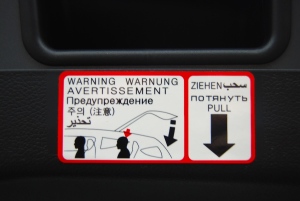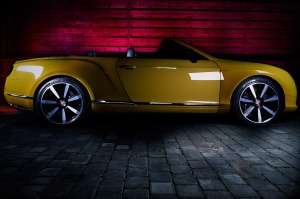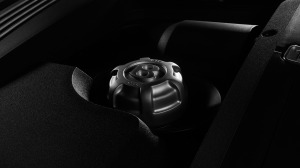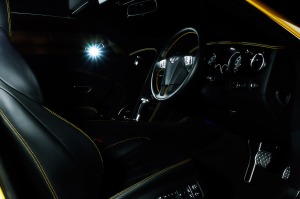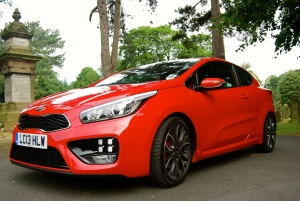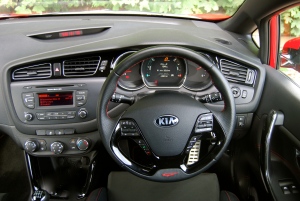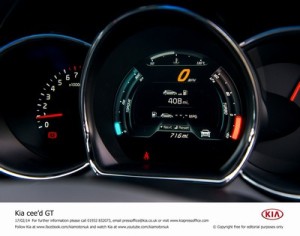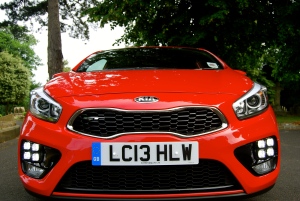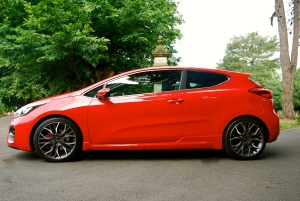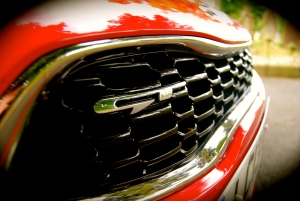Hyundai Veloster Turbo – Driven and Reviewed
 Believe it or not, the Hyundai Coupe (aka Tiburon/Tuscani) first landed on our shores nearly two decades ago, in 1996. Back then, it shocked and delighted in equal measure – Hyundais weren’t supposed to be sexy or daring, they were just, well, functional, a bit like a lump of coal. There were split opinions regarding whether this was just a temporary blip in an otherwise nondescript range, or if it really was a signal of Hyundai’s intent for the future.
Believe it or not, the Hyundai Coupe (aka Tiburon/Tuscani) first landed on our shores nearly two decades ago, in 1996. Back then, it shocked and delighted in equal measure – Hyundais weren’t supposed to be sexy or daring, they were just, well, functional, a bit like a lump of coal. There were split opinions regarding whether this was just a temporary blip in an otherwise nondescript range, or if it really was a signal of Hyundai’s intent for the future.
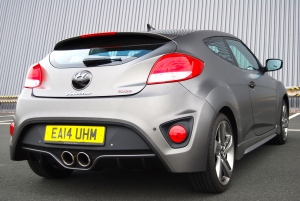 Well, back to the present day, and what we have here is the Coupe’s successor – the Veloster; a car that shares a slightly unusual name with an equally odd design feature. What Hyundai call a 1+2 door design is essentially a 2 door coupe, with one rear door……well, apart from the hatch, which also counts as a door, so it’s really a four door……..it’s probably best if you look at the pictures – this is definitely one of those instances where they paint a thousand, slightly rambling words.
Well, back to the present day, and what we have here is the Coupe’s successor – the Veloster; a car that shares a slightly unusual name with an equally odd design feature. What Hyundai call a 1+2 door design is essentially a 2 door coupe, with one rear door……well, apart from the hatch, which also counts as a door, so it’s really a four door……..it’s probably best if you look at the pictures – this is definitely one of those instances where they paint a thousand, slightly rambling words.
 Non symmetrical portals aside, the Veloster’s looks are nothing if not dramatic, especially in this range-topping Turbo guise we have on test. We start off with an Audi-esque trapezoidal mouth that dominates the front end, sucking in enough air to keep the greediest engine satisfied. There are creases and slashes aplenty on the Veloster, from the bonnet, to the sides, all the way to the rear. They’re mainly for decoration and they fit the bill perfectly; there’s always something new to look at and the optional matt grey paint (£565) on our test car does nothing to detract from this.
Non symmetrical portals aside, the Veloster’s looks are nothing if not dramatic, especially in this range-topping Turbo guise we have on test. We start off with an Audi-esque trapezoidal mouth that dominates the front end, sucking in enough air to keep the greediest engine satisfied. There are creases and slashes aplenty on the Veloster, from the bonnet, to the sides, all the way to the rear. They’re mainly for decoration and they fit the bill perfectly; there’s always something new to look at and the optional matt grey paint (£565) on our test car does nothing to detract from this.
 The Turbo’s rump is finished off with some purposeful looking twin exhaust pipes – a massive improvement over the slightly underwhelming efforts on the standard car. Adding a double-barrelled blunderbuss to the Veloster was always going to add menace, it’s just a shame that they’re rather ‘all mouth, no trousers’, as the tradition of Asian automotive politeness continues.
The Turbo’s rump is finished off with some purposeful looking twin exhaust pipes – a massive improvement over the slightly underwhelming efforts on the standard car. Adding a double-barrelled blunderbuss to the Veloster was always going to add menace, it’s just a shame that they’re rather ‘all mouth, no trousers’, as the tradition of Asian automotive politeness continues.
 Right, that rear door then. Yes, it does spoil the otherwise pretty coupe’s lines slightly, but it’s only on the passenger side so as a driver, you don’t have to look at it that often. On the other hand though, Hyundai have been sensible enough to put it on the safe side for this country (we’re looking at you – now thankfully defunct MINI Clubman). Speaking from a parent of two little girl’s point of view, it’s also incredibly handy. There is the option for them to put the driver’s seat forward like a traditional coupe if so required, but having that door there takes so much of the hassle associated with this genre of car out of the equation – far more than I expected if I’m honest.
Right, that rear door then. Yes, it does spoil the otherwise pretty coupe’s lines slightly, but it’s only on the passenger side so as a driver, you don’t have to look at it that often. On the other hand though, Hyundai have been sensible enough to put it on the safe side for this country (we’re looking at you – now thankfully defunct MINI Clubman). Speaking from a parent of two little girl’s point of view, it’s also incredibly handy. There is the option for them to put the driver’s seat forward like a traditional coupe if so required, but having that door there takes so much of the hassle associated with this genre of car out of the equation – far more than I expected if I’m honest.
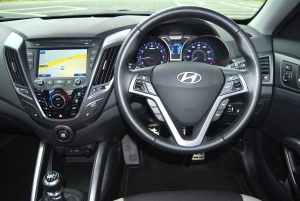 Inside the Veloster is far more conventional, with a Ford-style layout for the central control binnacle and black plastic aplenty. The seating position is low and flat, as you’d expect in a self-respecting coupe, but the seats are a tad unforgiving and I could imagine things getting slightly fidgety over long distances. The hand-brake lever is obviously still in the optimum location for LHD cars, as it’s far too close to the UK driver for comfort and, whilst I’m moaning, the way the stereo completely forgets your iPhone playback preferences after every journey gets a little tiresome.
Inside the Veloster is far more conventional, with a Ford-style layout for the central control binnacle and black plastic aplenty. The seating position is low and flat, as you’d expect in a self-respecting coupe, but the seats are a tad unforgiving and I could imagine things getting slightly fidgety over long distances. The hand-brake lever is obviously still in the optimum location for LHD cars, as it’s far too close to the UK driver for comfort and, whilst I’m moaning, the way the stereo completely forgets your iPhone playback preferences after every journey gets a little tiresome.
On the plus side though, there’s some great little touches like the chunky, Incredible Hulk-hand friendly door pulls, and the 30mph marker on the speedo that’s otherwise marked in 20mph denominations (that should surely be law in a country with so many 30mph limits?). The rear visibility isn’t impeded at all by the split rear window, in contrast to the likes of Honda’s CR-Z which employs the use of guesswork due to a similar design.
One note of caution concerning the Veloster’s rear seats. They may have a nice friendly door providing access, but the seats are purely for passengers under 5ft in height. Anyone taller than this won’t just be a bit uncomfy, they’ll require a third-party to unfold them to get back out – a point emphasised by the warning sticker on the boot hatch, highlighting the potential risk to loftier passengers when closing it.
 The Veloster Turbo is propelled by the same 1.6l T-GDi unit found in the KIA pro_cee’d GT we tested earlier this year, although, quite perversely, the hot-hatch is given the full-fat, 201bhp variant of the engine, whereas this ‘sports car’ makes do with 184bhp. Why they couldn’t share exactly the same engine is beyond me slightly – hopefully it’s to leave room for a fire-breathing ‘Turbo S’ variant further along the line.
The Veloster Turbo is propelled by the same 1.6l T-GDi unit found in the KIA pro_cee’d GT we tested earlier this year, although, quite perversely, the hot-hatch is given the full-fat, 201bhp variant of the engine, whereas this ‘sports car’ makes do with 184bhp. Why they couldn’t share exactly the same engine is beyond me slightly – hopefully it’s to leave room for a fire-breathing ‘Turbo S’ variant further along the line.
Either way, the Veloster Turbo makes good use of its 184bhp and performance – although not ‘pants-on-fire’ quick, is steady and predictable throughout the gears, with no real lag or dips in torque. On dry tarmac, the car negotiates bends in a similar fashion, with no scary surprises lurking unseen, and any potential weight unbalance from the extra door goes pretty much unnoticed. Push the Turbo too enthusiastically on wet roads though, and the front wheels will claw and scrabble for grip, making the experience a touch hairy as the weight of the front end typically forces understeer.
Overall, the Veloster Turbo is quite a complete package and, for fear of repeating myself, that extra rear door is very handy. Would I buy one over a GT86 though? – I don’t think so. The Veloster is more generously equipped for the money and it’s more economical. The GT86 though, is faster, better looking and ultimately, more of a hoot to drive.
By Ben Harrington
Specifications; Hyundai Veloster Turbo, Transmission – 6 spd manual, Layout – Front engine, FWD, Power – 184bhp, Torque – 265Nm, Emissions – 157g/km CO2, Economy – 40.9 mpg combined, Maximum Speed – 133mph, Acceleration – 8.4s 0-62mph, Price – £22,000 OTR, £22,565 as tested.
For full details, go to http://www.hyundai.co.uk


